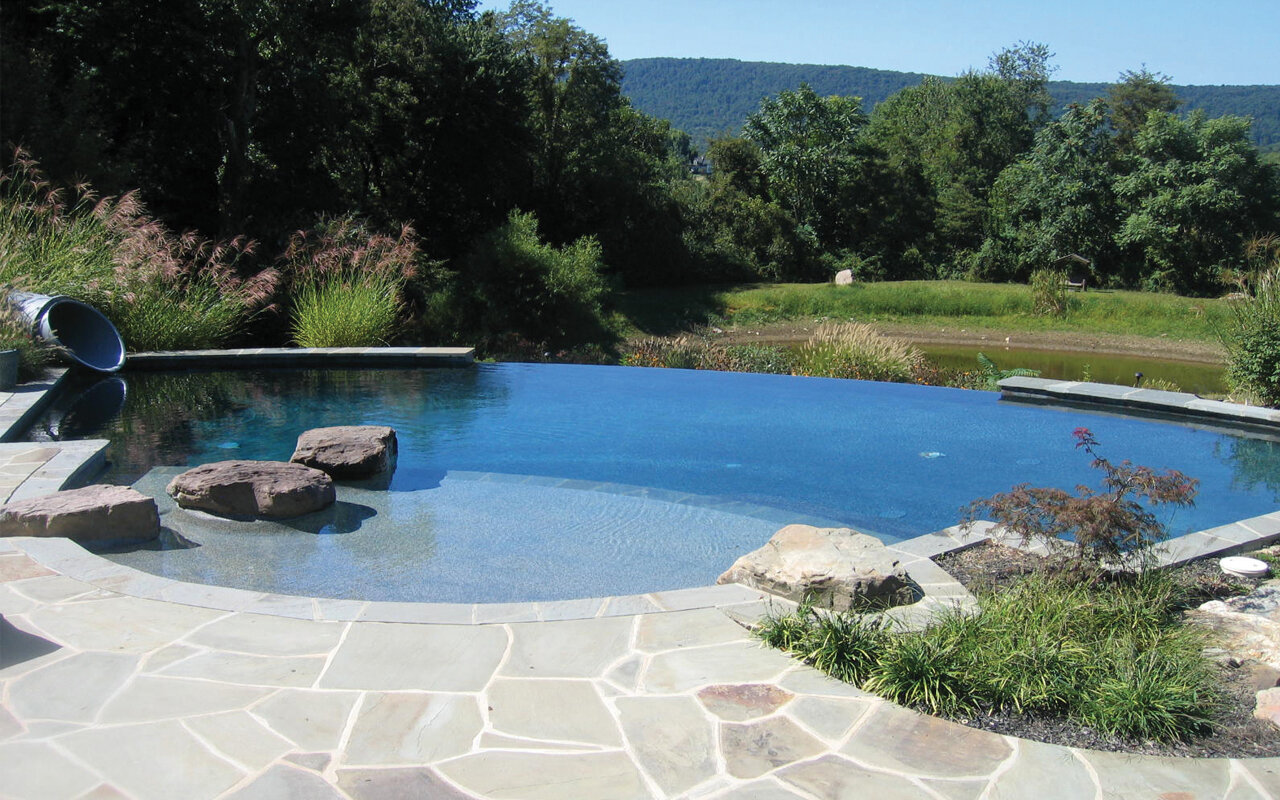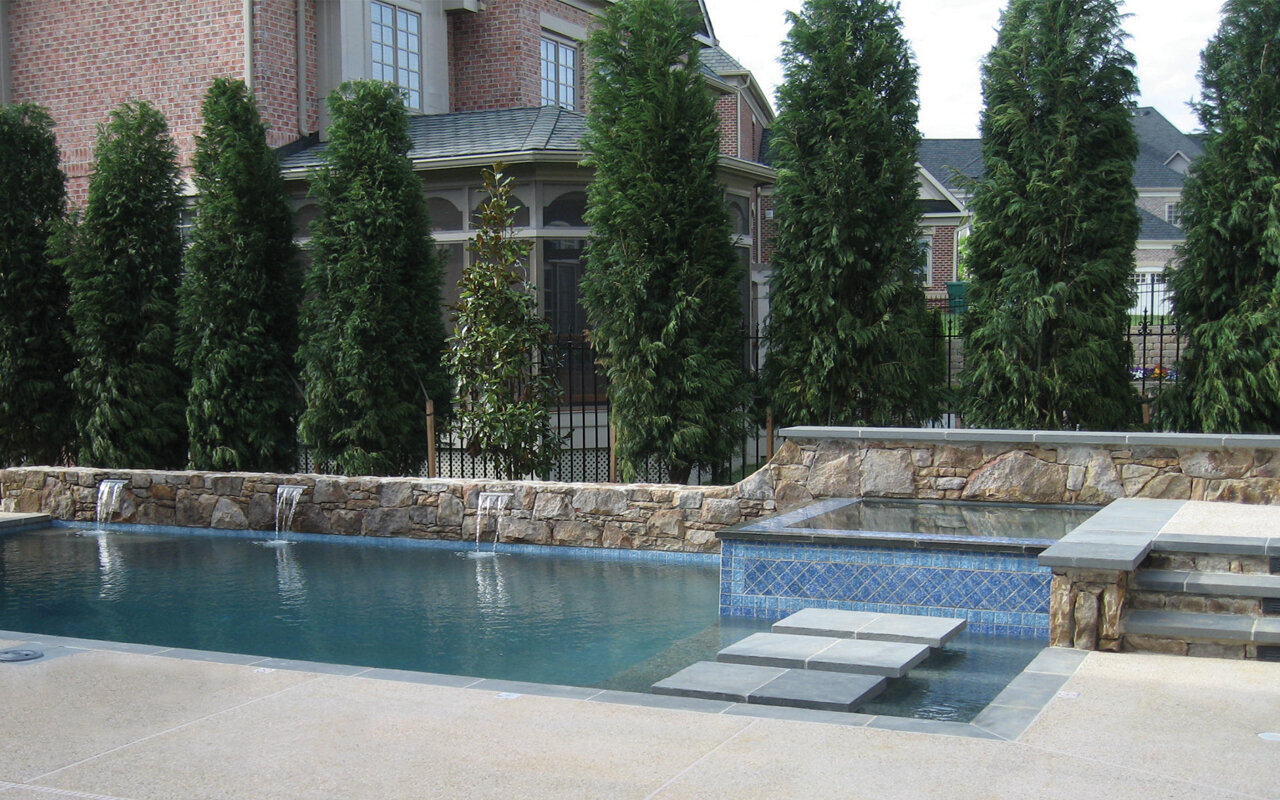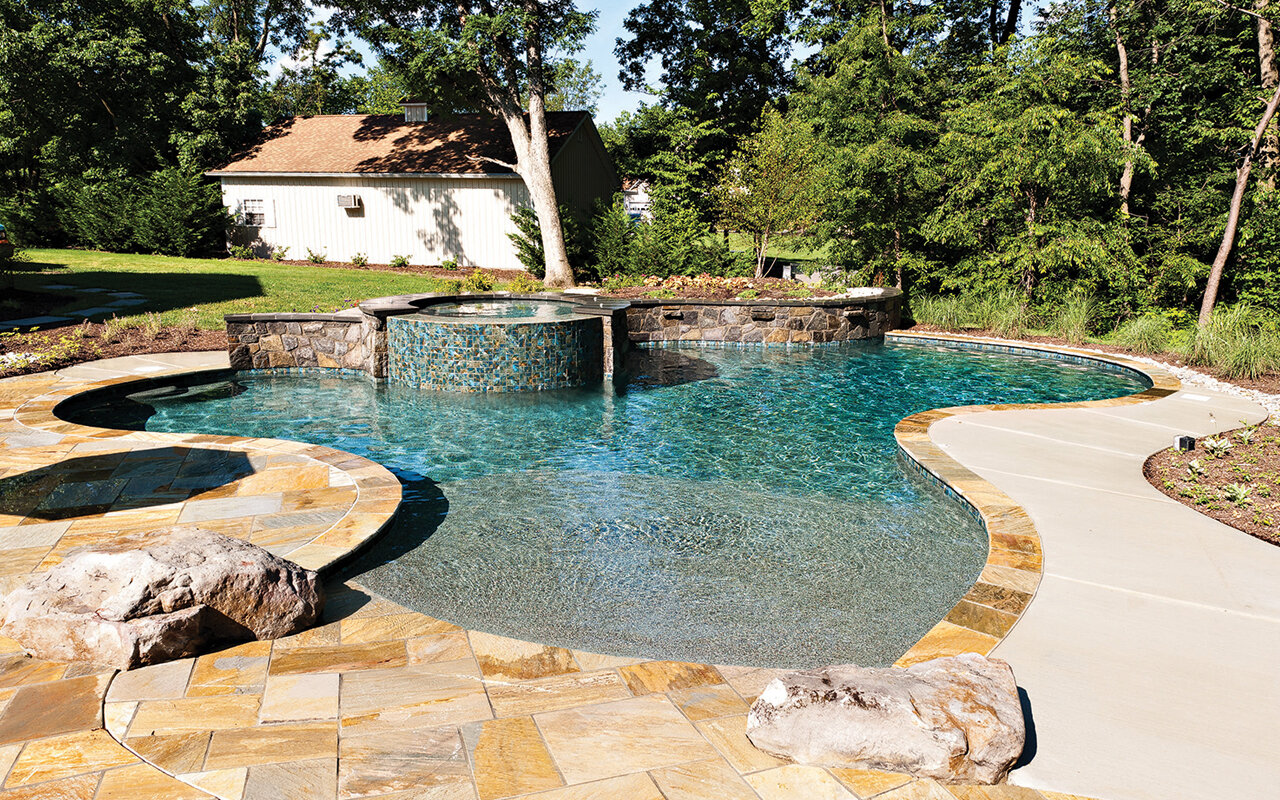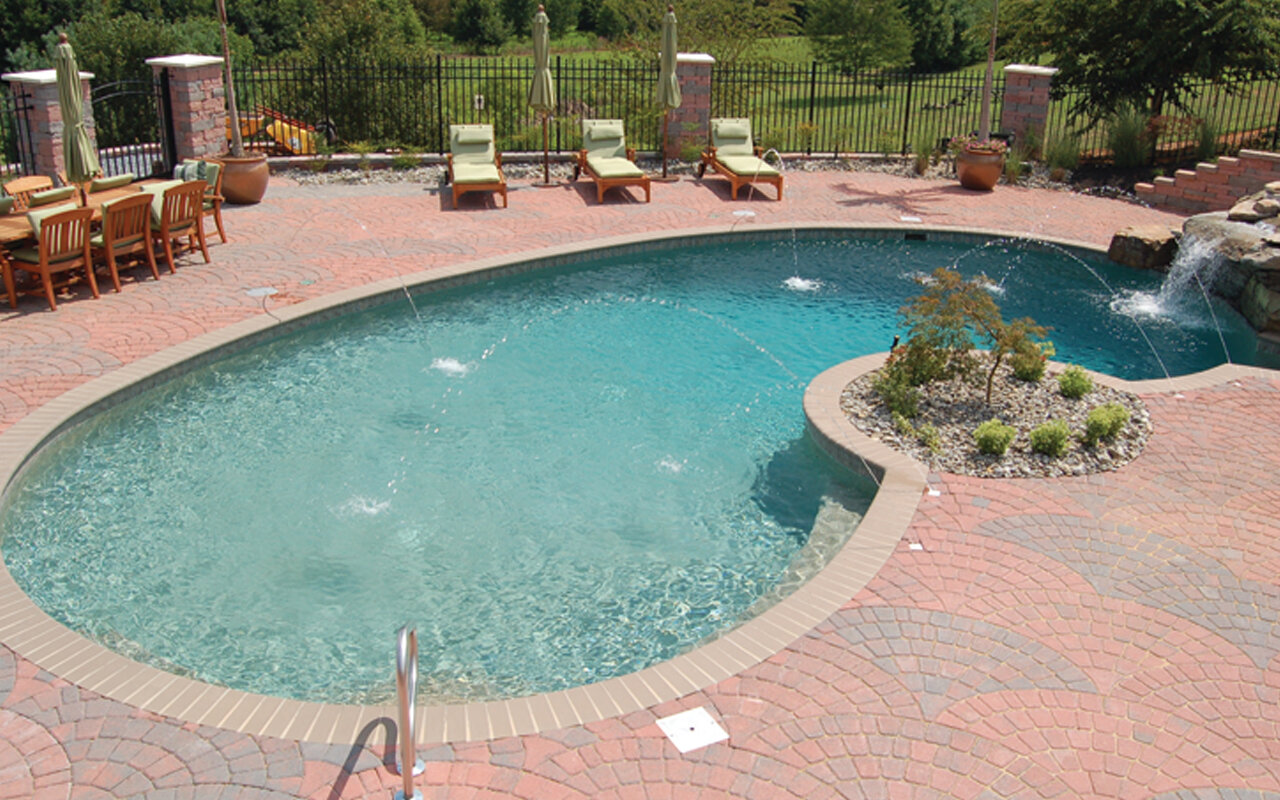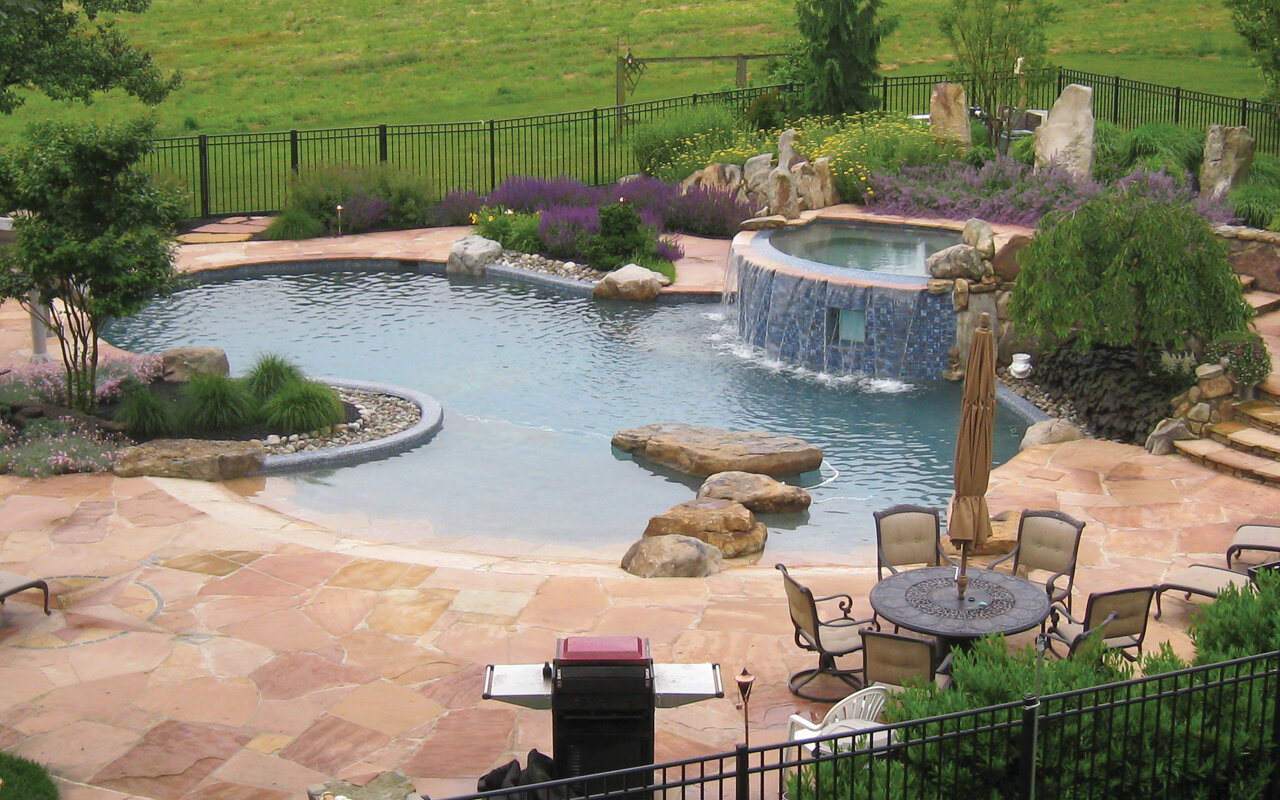CONCRETE SWIMMING POOLS PART ONE
All concrete pools are not the same! Here at Browning, we often refer to a concrete swimming pool as a gunite swimming pool. Gunite is a form of concrete that is applied to a surface pneumatically. The formula for concrete in a gunite application has a higher percentage of cement and a lower percentage of water than that of a “cast-in-place” or “shotcrete” concrete.
It is applied extremely dry, which allows the cement to bind with the aggregate with greater strength resulting in the strongest, watertight installation available.
With a gunite application, the design possibilities are limitless and a great option when the desire is to customize an environment.
Building A Pool With Concrete
A truck or gunite (concrete) rig brings a dry load of sand and cement to your job site. There, the material goes into a container called a hopper. From there, the material is fed into a mixing system known as an auger. The auger feeds the dry gunite (concrete)mix into a high-pressure hose. The hose has a nozzle and is operated by a professional known as a nozzleman. Using an additional separate line and tip that connects to the gunite hose, the nozzleman adds water to the dry mix as it exits the hose.
Concrete Pool Tile
The waterline tile defines your pool’s interior shape and is visible at the waterline. Tile on a swimming pool not only adds beauty and style to your pool design but also performs a functional purpose. It disguises the scum line or “bathtub ring” that would be visible on the surface of the pool due to the fluctuating water line, which is caused by evaporation, bather load, and water level. When choosing a waterline tile, you may want to consider perhaps maintaining a harmonious color scheme, or one that compliments the architectural features of your home, or maybe you want a specific whimsical expression with patterned graphic designs.
Concrete Pool Coping
Pool coping defined is the edging placed around the top edge of the swimming pool. It serves the dual purpose of protecting the pool structure from the surrounds and vice versa and also protecting the outside parts of the pool from water damage. However, while it is practical, it is still incredibly attractive, and it is an essential part of the aesthetics of the pool. When it comes to pool coping, there are different types that you can choose from. Generally, pool coping comes in two finishes, for example – square-edged (a straight down finish) or bullnose (where one or more edges are rounded to provide a softer finish). Which finish you choose will depend on the look that you prefer and who will be using the pool. The most common materials used for coping are brick, natural stone coping, pavers, and cantilevered concrete.
Check out some of our Award Winning Concrete Pools
Have Questions?











